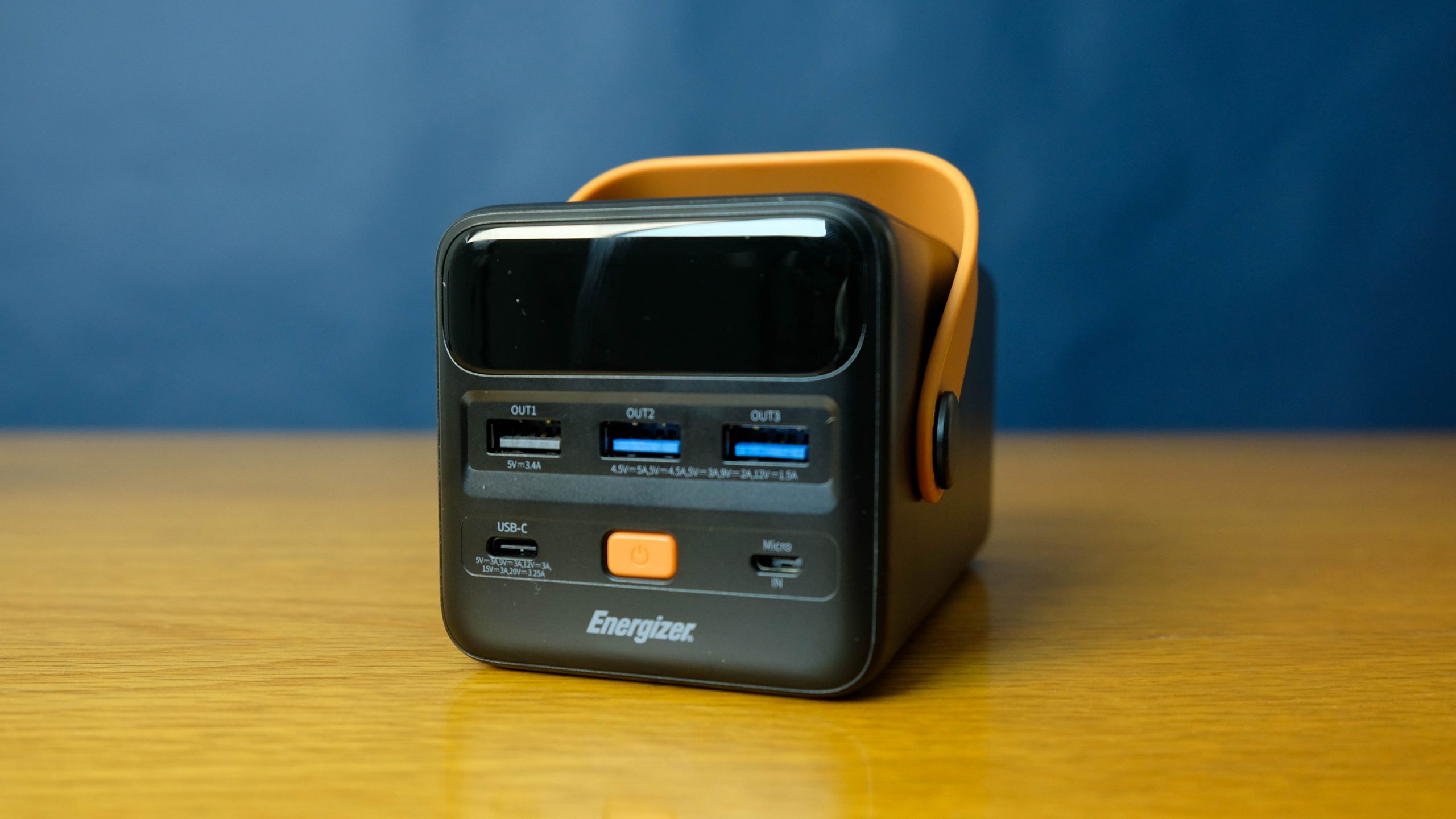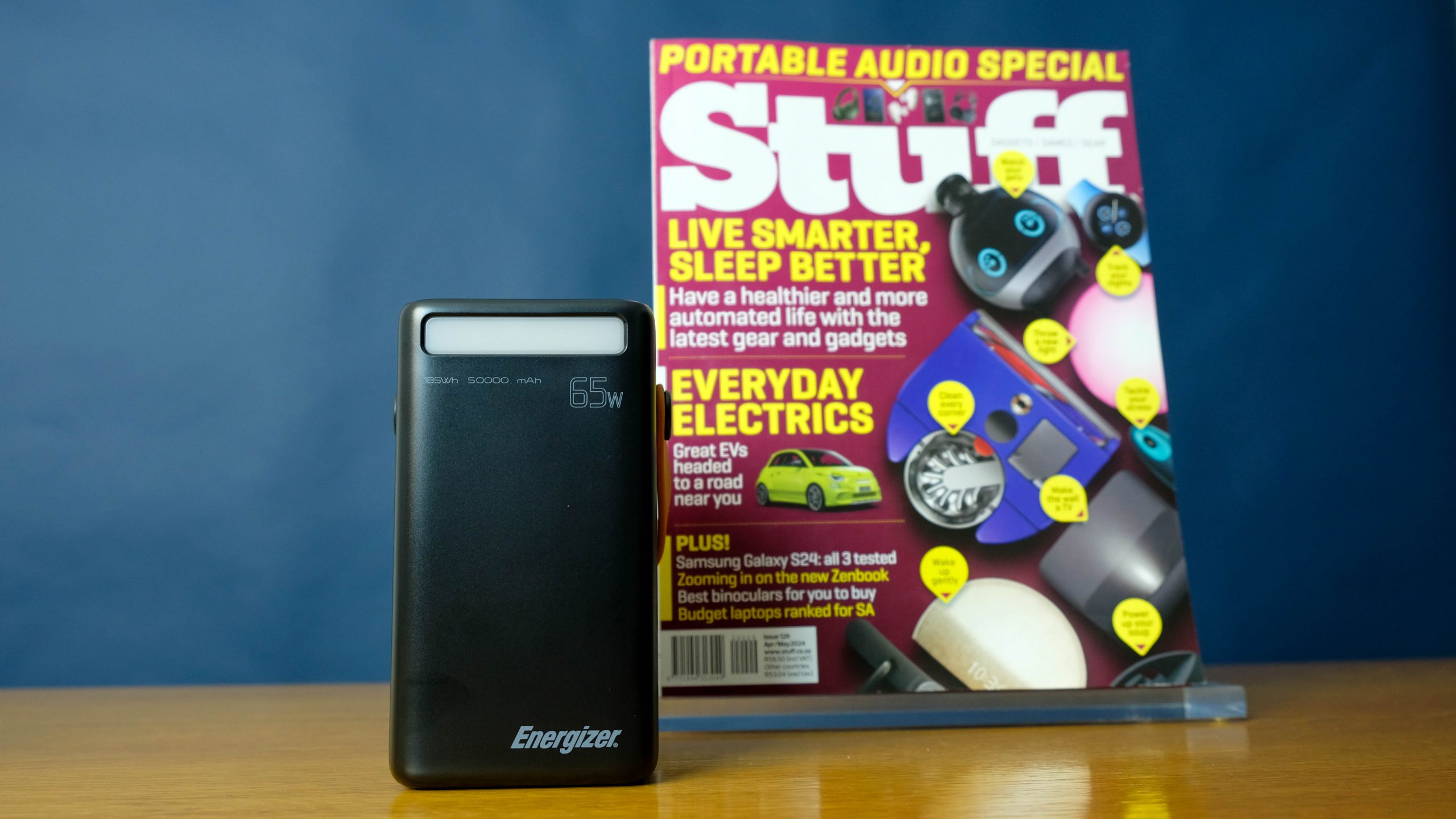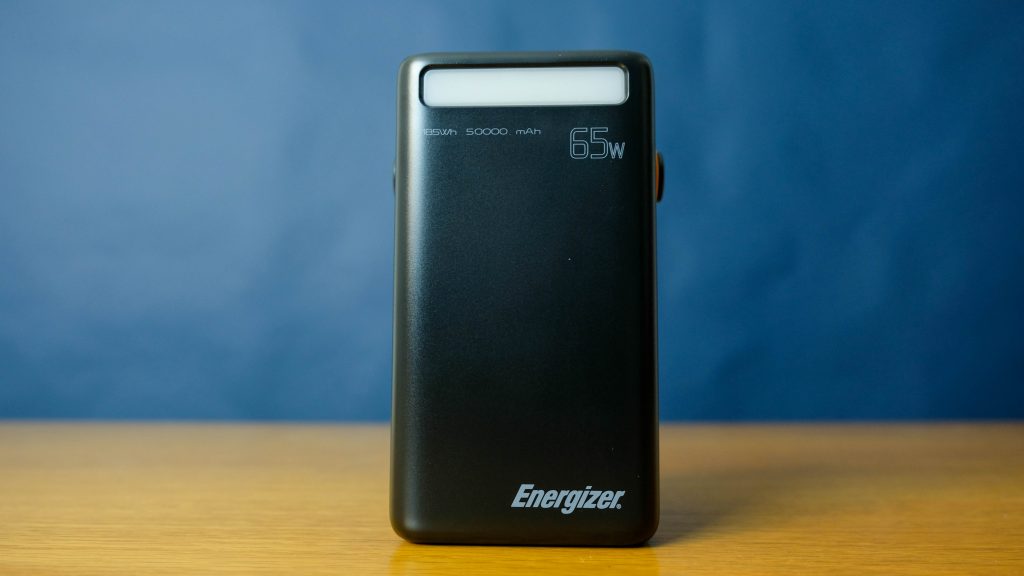At over a kilogram, the UE50001PQ isn't the sort of battery you can tuck into a pocket before you leave the house but if you're on-site somewhere, it's worth slinging into a laptop bag. Lugging it long distances along with your laptop (which it might even outweigh) will be a chore but it'll be worth it to keep yourself working when all those around you have faded.
-
Ease of use
-
Battery
-
Practicality
-
Value
South Africans speak colloquially about power bricks but the Energizer UE50001PQ is a neatly compact but entirely literal example of one. It features similar dimensions, slightly scaled down, to a conventional face brick. The massive battery capacity means it’s also fielding a similar weight.
As with most products of its type, usage isn’t especially complicated. If your power brick isn’t simply plug-and-play, your product has failed. But there’s enough for us to examine in a review almost as tightly packed as the UE50001PQ itself.
Built like a brick
 How do you go about describing a plastic-encased rectangular cuboid with any degree of elegance? The world has managed to marvel over rectangular slabs of glass and metal for almost two decades so it shouldn’t be that hard. The Energizer UE50001PQ is just one such cuboid, measuring about a hand’s length at its longest edge and featuring rounded edges. A rubberised handle is attached near the top face, for ease of transportation, and the face itself is populated with a range of ports.
How do you go about describing a plastic-encased rectangular cuboid with any degree of elegance? The world has managed to marvel over rectangular slabs of glass and metal for almost two decades so it shouldn’t be that hard. The Energizer UE50001PQ is just one such cuboid, measuring about a hand’s length at its longest edge and featuring rounded edges. A rubberised handle is attached near the top face, for ease of transportation, and the face itself is populated with a range of ports.
All told there are five ports. Three USB-A, a single USB-C, and even a venerable microUSB make their home in a little cluster around the power button. A monochrome LED readout offers the remaining battery capacity as well as the percentage as it ticks up while charging, while a bright LED strip occupies the top of one of the longer edges.
Urban mobility
We spent the whole of this review running an Apple MacBook Air M1 on the Energizer UE50001PQ, where the notebook spent its time behaving as though it was plugged into the mains. There was one oddity — it took longer for the MacBook to register that it was being charged than a mains connection typically did. Otherwise, it was like being plugged into a functional Eskom. There was no significant heat from the UE50001PQ, but then we didn’t expect any. It’s a) winter and b) our MacBook doesn’t make full use of the 65W PowerDelivery output possible here.
The three USB-A ports are each capable of up to 22.5W output but the UE50001PQ’s rated output is capped at 65W at once, meaning that multiple connections will slow down your speeds from one port or another. You’re not likely to draw 65W at once unless your laptop is a power-sucking hog. Plugging three mobile devices in at once shouldn’t cause issues at all.
Topping back up is at least as quick as discharging the UE50001PQ, provided you’re using the USB-C port to do so. The same PD65W charge speed applies, which should get you back up to full in a couple of hours. If you’ve got the misfortune of using the microUSB port (which is what it’s actually there for), filling the 50,000mAh battery will take considerably longer. But heck, any port in an emergency, to paraphrase doomed sailors.
Energizer UE50001PQ verdict
 It’ll cost at least R1,600 to put one of these bricks into your Wall of Power™. Not everyone will be willing to sling that sort of money around when you can get most of the capacity for half the price. But you’re not considering one of these add-ons just to charge your smartphone. Okay, fine, if you’re an influencer or otherwise terminally online, you might. A better target would be folks on a building site somewhere Eskom hasn’t finished laying cables or somewhere similarly remote. Those folks have the inclination, the spare cash, and the shoulder strength to carry something that will keep a laptop — and a few extras — charged up long enough to return to civilization.
It’ll cost at least R1,600 to put one of these bricks into your Wall of Power™. Not everyone will be willing to sling that sort of money around when you can get most of the capacity for half the price. But you’re not considering one of these add-ons just to charge your smartphone. Okay, fine, if you’re an influencer or otherwise terminally online, you might. A better target would be folks on a building site somewhere Eskom hasn’t finished laying cables or somewhere similarly remote. Those folks have the inclination, the spare cash, and the shoulder strength to carry something that will keep a laptop — and a few extras — charged up long enough to return to civilization.





1 Comment
The word Lithium does not appear in this “Review”, If the storage medium is Lead Acid, or zinc, graphite, Nickel or alkaline, surely this is a more important aspect than whether the handle is rubberised?
Medium, number of discharges, can you discharge down to 10 000 mWh without compromising unit life expectancy, time to fully charge . . . .?
Give us some specification-type facts, Brenter